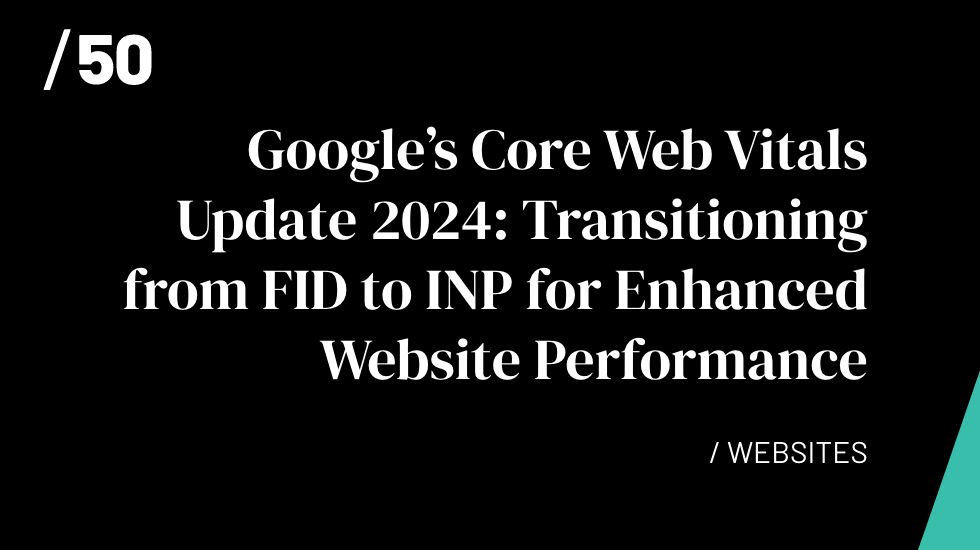Google is set to make its biggest change to core web vitals since it was introduced in 2020.
In the ever-evolving landscape of the internet, maintaining an up-to-date website is not just a choice, but a necessity. With Google’s next core update scheduled for March 2024, understanding the changes to Core Web Vitals is crucial for website owners looking to stay competitive. This blog post aims to explore the impending shift from First Input Delay (FID) to Interaction to Next Paint (INP), emphasizing the significance of site optimization and adherence to stricter UX standards.
The Shift to INP: A Business Opportunity
For business owners, the transition from FID to INP presents a unique opportunity to not only meet new standards, but to surpass them. This shift underscores Google’s commitment to providing users with a seamless browsing experience, making it imperative for businesses to align with these evolving dynamics.
Why Replace FID?
The decision to replace FID stems from its limited scope, overlooking crucial aspects of a website’s interactivity. FID’s focus on measuring the delay between a user’s initial interaction and the browser’s response fails to consider load times for essential interactive elements and scripts. Additionally, FID may not accurately reflect the user experience of dynamic websites with complex interactions. INP, on the other hand, focuses on the time from a user’s interaction to the Next Paint, providing a more holistic view of interactivity.
Understanding INP vs. FID:
INP and FID, while both measuring user interaction, differ in their approach and implications. INP focuses on user experience by analyzing how quickly a user can see changes after an interaction. FID, a field metric measured in real user conditions, captures delays in the browser’s response to the user’s first interaction. This shift emphasizes the need for a more comprehensive understanding of webpage interactivity.
Fine-Tuning Your Site: Strategies for Seamless Web Performance
Ensuring optimal site performance during the transition from FID to INP is paramount, as emphasized by Google’s call for comprehensive optimization. This includes image optimization, with a specific recommendation to update images to the efficient WebP format. This move goes beyond trend-following, underscoring the importance of aligning with evolving standards for a seamless web experience.
In the pursuit of seamless web performance, website owners must engage in a range of optimization strategies. From assessing and optimizing First Contentful Paint (FCP) to removing render-blocking resources, displaying text before font loading, minifying HTML, CSS, and JavaScript, eliminating unused CSS, reducing Time-To-First-Byte (TTFB), and keeping DOM size small—these strategies collectively contribute to fine-tuning a site for optimal performance during this pivotal transition.
Conclusion:
As the digital landscape evolves, website owners, developers, and SEO practitioners must adapt to changes in Core Web Vitals to enhance user experience and positively influence search engine rankings. The shift from FID to INP signifies a move towards a more holistic approach to measuring webpage interactivity, and by implementing the outlined optimization strategies, businesses can ensure a faster First Contentful Paint, delivering a seamless and optimized user experience on their websites.
How will this affect your site’s ranking? Contact Agency 50 today to discuss your website goals, and get a website audit to prepare for Google’s update.
